Alerts Configuration
The Alerts Configuration sub-module enables you to create and manage alerts based on AI inference results. You can define the type, geo-location, and recipients for each alert.
Accessing the Alerts Configuration Sub-Module
You can use this sub-module to configure new alerts or manage existing ones. All configuration tasks are centralized here.
To access the Alerts Configuration module, do the following:
- Login to the platform.
- Click the Data module and the select Alerts Configuration sub-module.
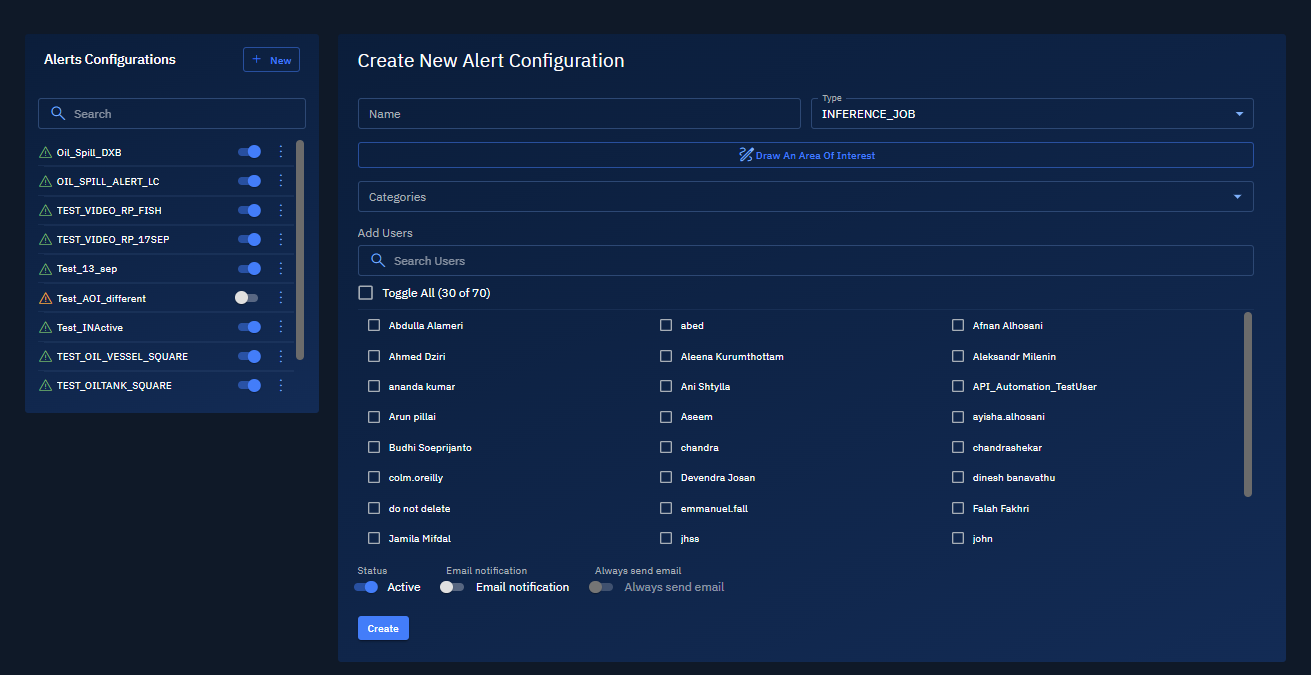
The Alerts Configuration page is displayed.
In the Alerts Configuration page, you will see a list of existing configurations, including their names, types, and statuses (active or de-active).
Creating a New Alert Configuration
Alert configurations allow you to define the conditions under which alerts are generated. This includes setting the job type, area of interest, and notification preferences.
To create a new alert, do the following:
-
Login to the platform.
-
Click the Data module and the select Alerts Configuration sub-module.

The Alerts Configuration page is displayed.
-
Do one of the following:
- Click the + New button to create a new alert configuration.
- Type details of the alert in the Create New Alert Configuration section.
-
In the Create New Alert Configuration section, do the following:
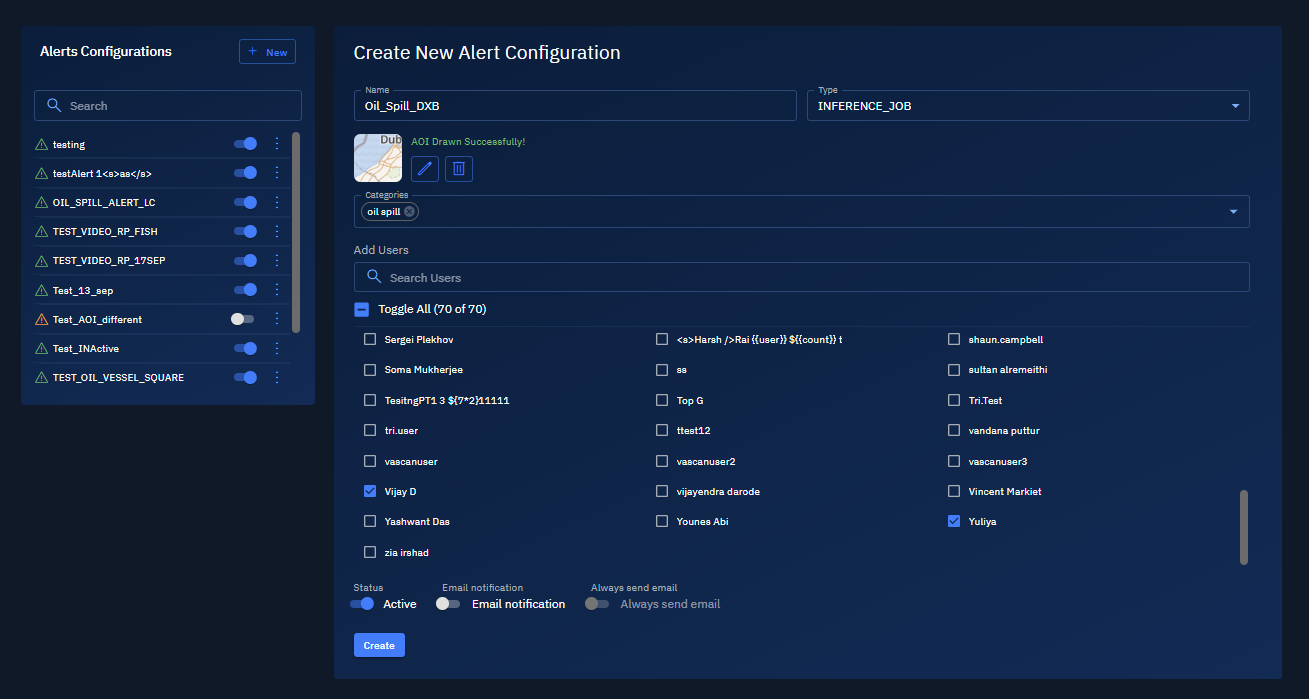
-
In the Name field, enter a meaningful name for your alert.
-
From the Type drop-down menu, select the job type (e.g., Inference Job).
-
Click Draw AOI to mark an area of interest directly on the map.
-
From the Categories drop-down, choose the relevant detection categories (e.g., Oil Spill).
-
In Add Users, enter the names of users who should receive notifications.
-
Toggle on Email Notification and Always Send Email, based on how you want alerts delivered.
-
Click Create to save your configuration.
Once saved, alerts will be triggered whenever a matching detection occurs within your specified AOI.
Edit Alert Configuration
You can make appropriate changes to any existing alerts by simply editing the alert.
To edit an alert, do the following:
-
Login to the platform.
-
Click the Data module and the select Alerts Configuration sub-module.

The Alerts Configuration page is displayed.
-
In the Alerts Configuration page, select an alert that you want to edit.
The Edit Alert Configuration page is displayed.
-
In the Edit Alert Configuration page, make the appropriate changes and then click the Save.
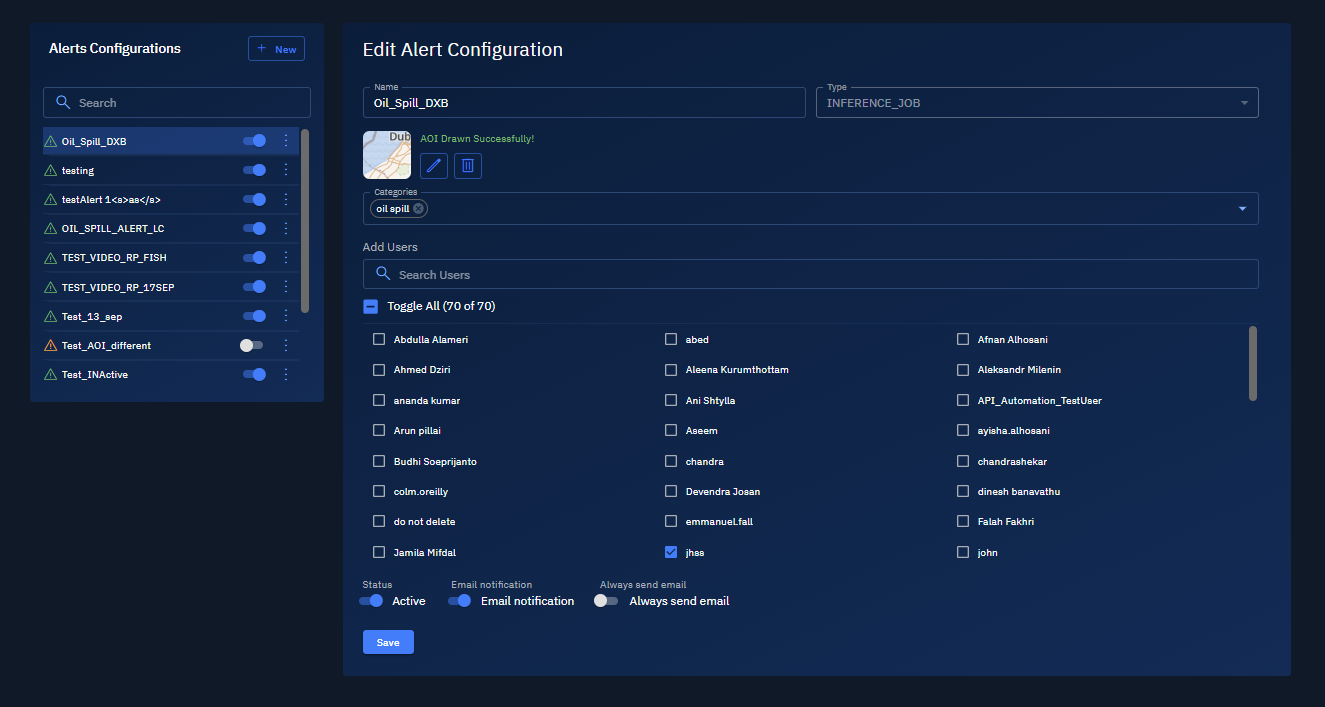
Searching Alert Configurations
You can find a specific alert by searching the alert by its name. This is helpful when managing several configurations across a team.
To search an alert, do the following:
-
Login to the platform.
-
Click the Data module and the select Alerts Configuration sub-module.

The Alerts Configuration page is displayed.
- In the Alerts Configuration page, type the name of the alert in the Search field to search by configuration name.
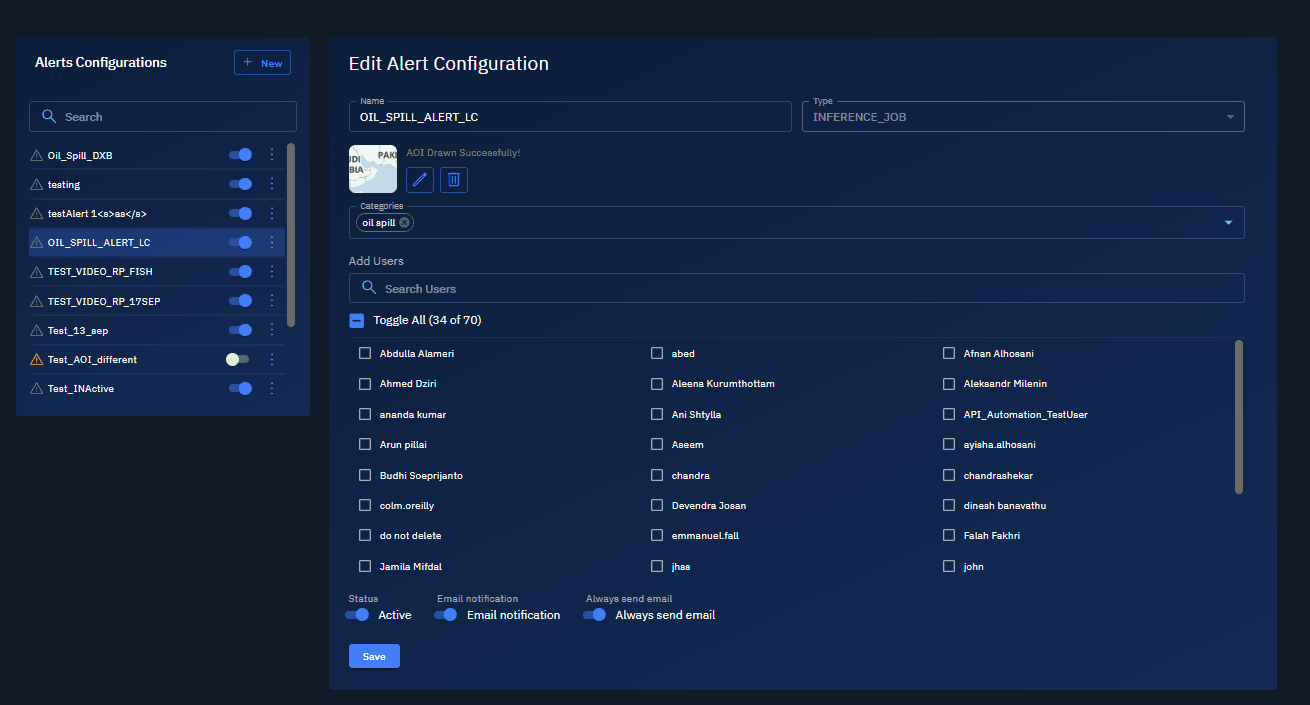
The platform displays the relevant alert.
- Select the relevant alert to view the details.
Deactivating or Activating an Alert Configuration
When you create a new alert, the alert is automatically activated.
However, you can deactivate and activate any alert as per your the requirements of your project.
To activate an alert, do the following:
-
Login to the platform.
-
Click the Data module and the select Alerts Configuration sub-module.

The Alerts Configuration page is displayed.
- In the Alerts Configuration page, locate the alert that you want deactivate or activate, and then proceed to turn off or turn on the respective toggle button of the alert.
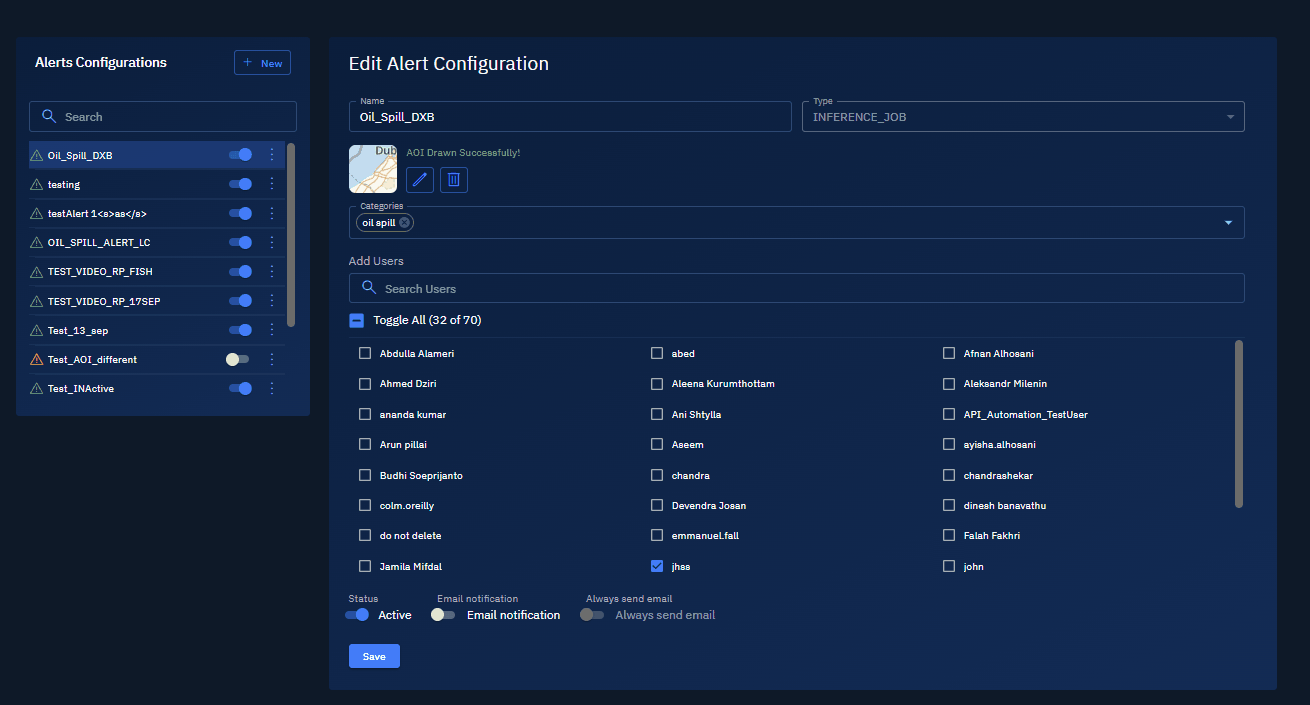
Deleting an Alert Configuration
You can permanently remove an alert configuration from the system. Once deleted, the alert cannot be retrieved.
To delete an alert, do the following:
-
Login to the platform.
-
Click the Data module and the select Alerts Configuration sub-module.

The Alerts Configuration page is displayed.
-
In the Alerts Configuration page, locate the alert configuration that you want to delete, click the three-dots menu, and then click the Delete option.
-
Click OK to confirm the deletion.
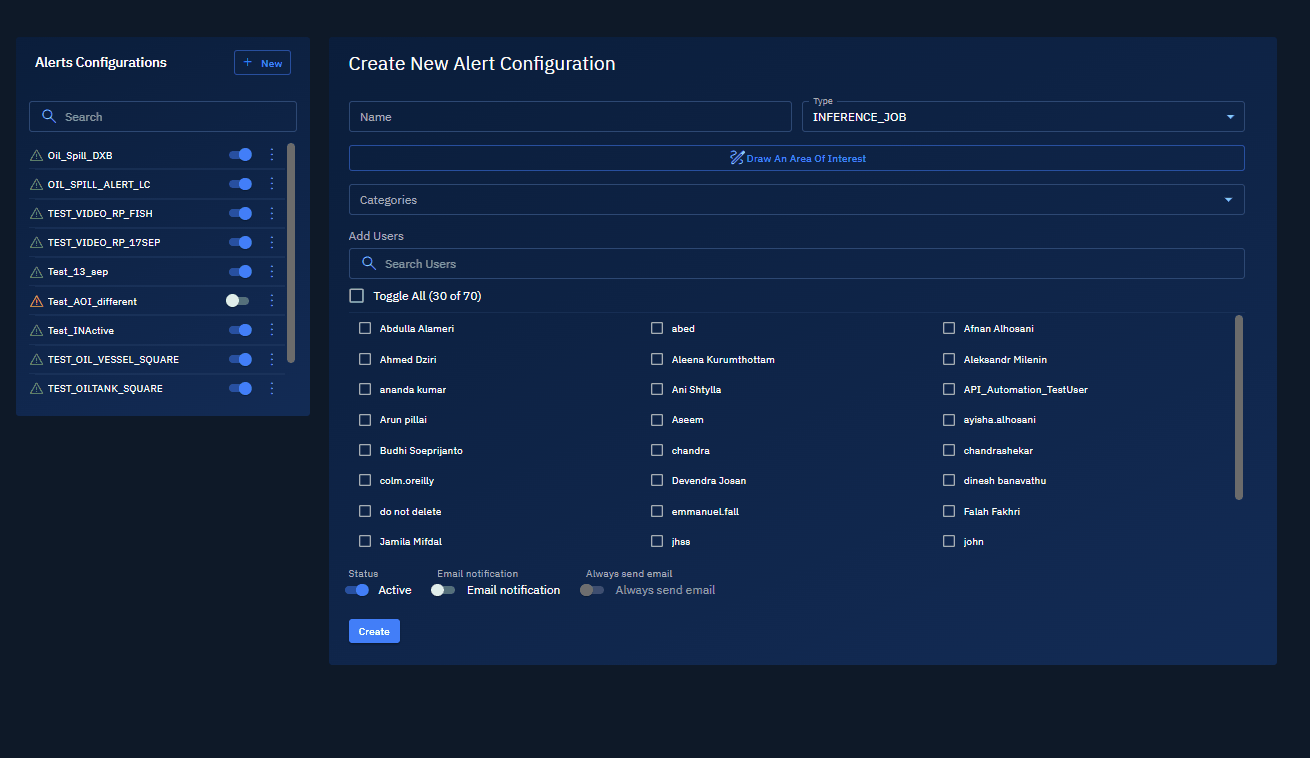
The alert is permanently deleted from the system.
Deleting a configuration permanently removes its rules and stops alert generation.